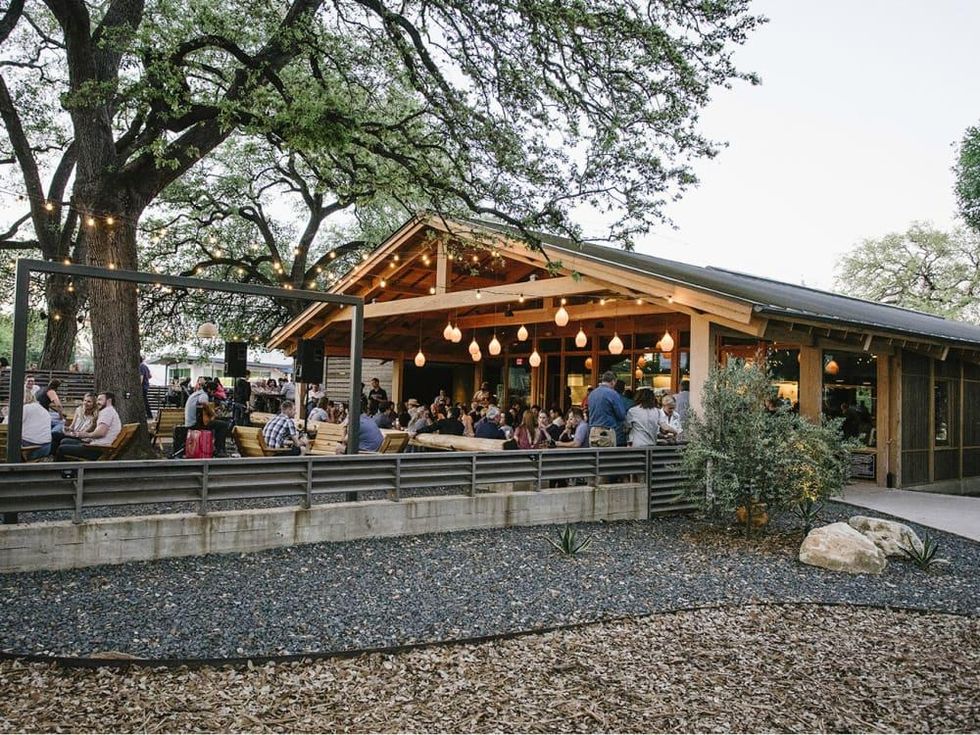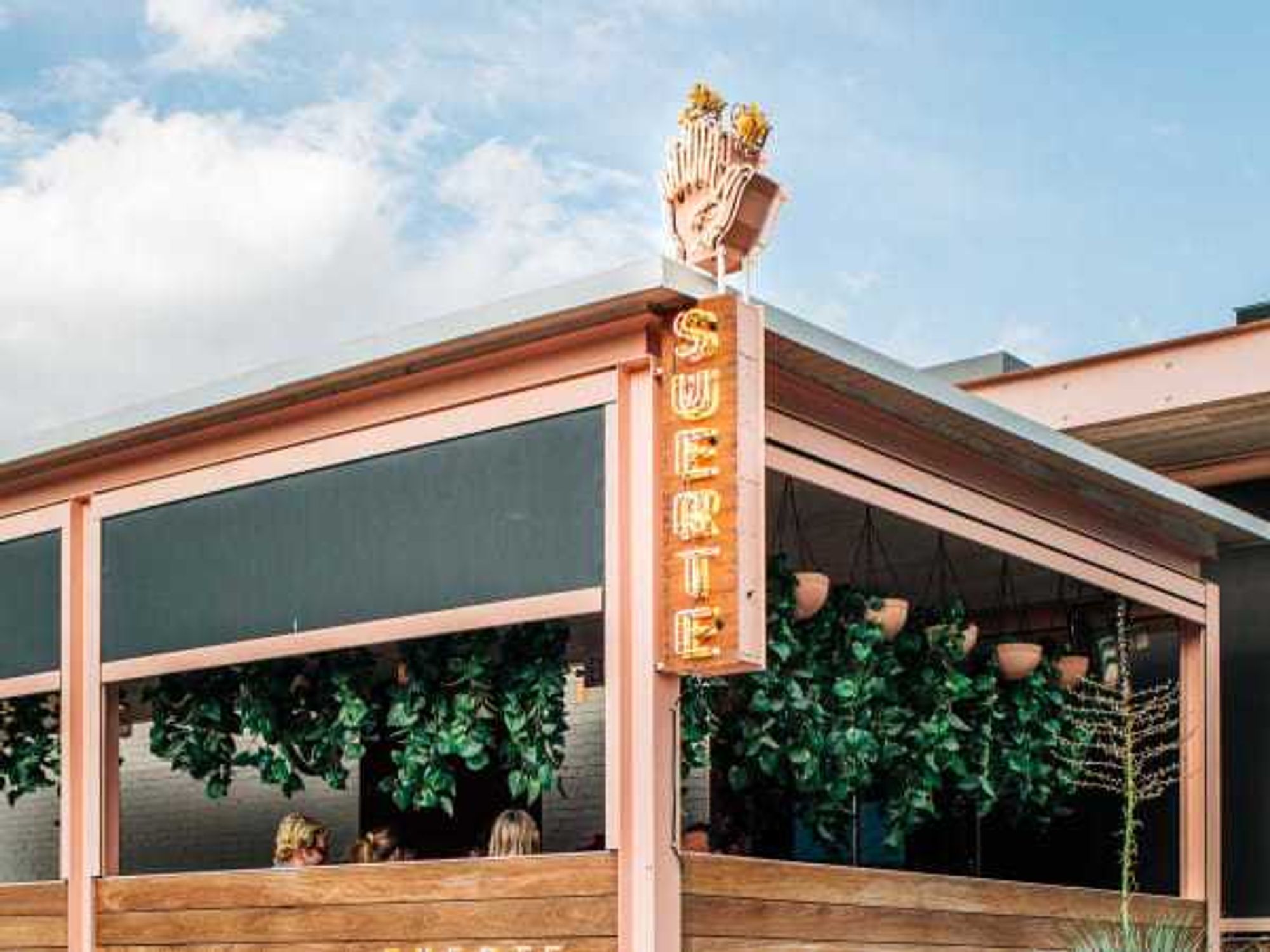First thoughts
What you need to know about Tyson Cole and Aaron Franklin's new restaurant Loro — open now
If Austin’s food scene is just as important to the city’s identity as its live music venues (and it is), then we have a problem. To grow as a culinary destination, we have to recognize that good restaurants, those that deliver palate pleasing foods in a hip, comfortable atmosphere, just won’t cut it. What we need is more great restaurants — and those always start with a sense of place.
It’s too early to judge whether Loro will ascend to that vaulted list, but in its first few weeks of operation, it’s clear the restaurant couldn’t exist anywhere else than Austin. And its precarious balance of high and low (when’s the last time a Texas roadhouse listed flank steak as bavette?) couldn’t have come from anyone else but its two seemingly polar opposite chefs: Tyson Cole and Aaron Franklin.
Cole, fairly or not, is known for being buttoned up. He famously took a six-year apprenticeship under Musashino owner Takehiko Fuse, during which time he learned a new language to better understand the nuances of Japanese cuisine. Franklin, rarely seen in anything other than a T-shirt and shorts, played drums in local indie group Those Peabodys before learning how to make barbecue during a series of backyard parties. The first iteration of his eponymous restaurant was a trailer in a parking lot off I-35.
What connects the two men is a DIY spirit — both put in long hours with no guarantee of a reward. Of course, those days are now long behind them, but not unlike fashion designers given the reins of a heritage house, they must be mindful of the brand.
As a branding exercise, the interior (designed by Michael Hsu Office of Architecture and Craig Stanghetta of Ste. Marie) couldn’t work better. Its high rafters simultaneously reference Japanese farmhouses and Texas dance halls, and the vernacular shou sugi ban walls nods to wood-fired cooking. The seating — a mixture of contemporary Windsor chairs, booths, and benches — is classic Texana reinterpreted with Japanese minimalism. It all feels like a fancy place to drink a few Lone Stars, especially when you catch a few bars of Arlo Guthrie singing “Good Morning America: How Are You?” overhead. As Dolly Parton famously said, "It takes a lot of work to look this cheap." When it comes to restaurants, it takes a lot of work to look this casual.
But with no meats by the pound or nigiri to speak of, the food doesn’t exactly follow the script. The most literal interpretation of the partnership is the candied kettle corn, throwing in a little bit of Franklin (brisket burnt ends) and a little bit of Cole (a liberal sprinkling of peppery togarashi). From there, things get trickier.
Unlike Kemuri Tatsu-Ya — Loro’s most obvious local parallel — the menu isn’t particularly referential. Sure, the sweet corn side riffs on both creamed corn and succotash, but it isn’t really either of those things with its jolt of brightness from yuzu. At first bite, the smoked prime bavette hits you with a signature Texas steakhouse crust, but the shishito salsa verde spooned on top is just as redolent of chimichurri as it is of anything from the pan-Asian arsenal.
More often than not, the two traditions meld by recognizing that both cuisines can get leaden if left unchecked. Dishes like the sprightly Thai green papaya salad and the sweet and salty garlic rice noodles serve the same purpose as the pickles, onions, and slaw served alongside the strong flavors of Central Texas barbecue. The coconut scented rice mimics the blandness of a slice of Mrs. Baird’s, providing a rest stop between the pop of chili gastrique on the brisket (yes, it’s just as satisfying here as at Franklin Barbecue) or the bold spices used in the chicken bo ssam.
The exacting presentation is all Cole (though it's worth nothing they employ former Old Thousand executive chef James Dumapit as the chef de cuisine). You are not likely to find a more delicate application of herbs at any counter service joint. That feels perfectly at home in Austin, too.
There are still a few kinks in the early operation, as every new restaurant has. The bar ordering system can be a bit confusing until you realize that the metal rising sun signs running along the perimeter are meant to draw you in. The expansive bar practically begs for a full array of bottles, even if the draft cocktail system is necessary to keep the lines humming along. But the two icons have already done something far too rare these days, a restaurant that clearly proves there's no place like home.



